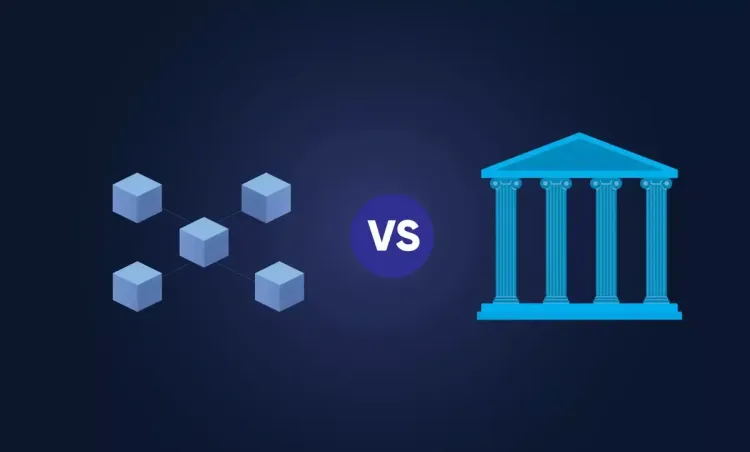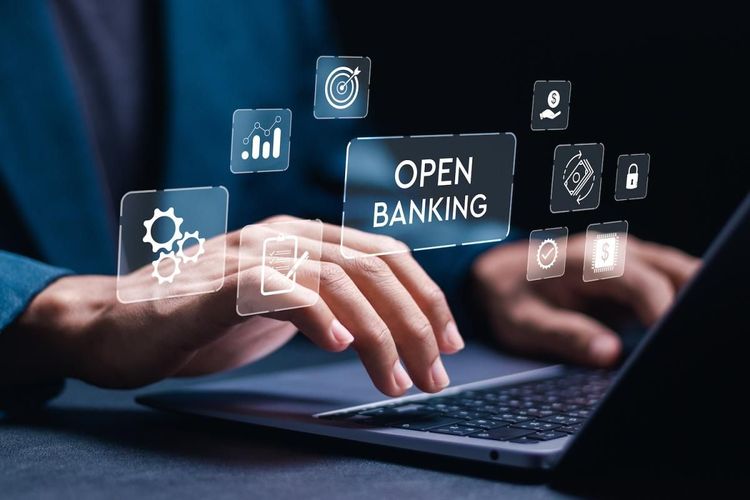The rapidity with which we understand and interact with money is altering at an unprecedented speed. Moreover, decentralized finance is quickly emerging as a viable challenger to traditional finance, disrupting the longstanding systems we have depended on for decades. But what is the comparative analysis between these two worlds of finance? And will DeFi take over traditional finance as we move towards a more digital-centric approach? As explored in this blog, I aim to break down the basics of both systems, their strongholds, shortcomings, and possible projections. By the end, you will have an informed opinion on which financial system is likely to dominate or whether both can gracefully coexist.
Introduction to both DeFi and Traditional Finance
Traditional finance operates as a clientele system within a vast network of institutions, including banks, governments, regulators, and other sectors that define the way money is handled around the globe. It is the system that most of us are accustomed to—receiving a pay packet at the bank, paying with a credit card, getting a bank mortgage, etc. Contrarily, DeFi works on a completely different paradigm. It doesn't rely on a blind trust framework instead captures blockchain technology and smart contracts and removes centralised entities, aka banks, to provide services like lending, borrowing, and trading. Both systems are unique in their features. Traditional finance has established stability, while advocates of DeFi boast about its transparency and ease of access to users. These two perspectives provide an understanding of money, which is vital in analysing its possible future.
A Brief History and Evolution of Financial Systems:
It is important to assess the shifts made within DeFi and traditional finance systems to scope a comparison. These traditional systems stem from bartering and rich currencies, banks, and laws that came after. With the appearance of early banks in the Renaissance Europe period, traditional finance looked to adapt to its time with the introduction of credit cards and digital banks. However, DeFi issuers have been newer players in the game, coming towards 2017 with the foundation being laid by Bitcoin in 2009. Unlike traditional systems that grow in value and function over time, DeFi sets out to challenge business models. With Ethereum, Uniswap, and AAVE currently spearheading, the perspective and uses of money seem to be changing drastically as now more people than ever are enrolled with DeFi.
Defi: Applications and Industry Participants Explanation
Most decentralised DeFi systems run on the Ethereum blockchains. Programs that store and enforce rules called smart contracts are the “heart” of DeFi applications. This allows for automated, autonomous financial transactions without the need for a mediator. Users of these platforms have the option to earn interest on lent funds, freely trade cryptocurrencies, or borrow money without a credit check. Picture wanting to obtain a loan but not having to deal with a bank. That's the comfort DeFi provides. Its users include, but are not limited to, all kinds of tech-savvy people, crypto lovers, and citizens from developing countries who do not have access to banking services. What truly makes DeFi revolutionary is who can utilise it. Anyone with an internet connection is free to join regardless of geographic location or social standing.
Traditional Finance: Positives And Negatives
Traditional finance continues to outperform all other types of finance because of its reliability and authority developed through stern regulations. These lead to increased trust for consumers when putting money in countless FDIC-insured accounts or dealing with compliance-monitored banks. Credit cards, savings accounts, and banks themselves aren’t just features of modern society but are some of the most important systems. Nonetheless, these advantages are not without downsides. In this regard, high rates, sluggish transactions, and limited scope of service continue to put some users asunder. For instance, international wire transfers can cost above $30 per transaction and take days to process. Furthermore, social inequity is still ingrained in conventional finance; millions of unbanked people around the globe cannot even get access to the most fundamental of services.
Regulatory Challenges and Future Prospects for Both Approaches:
Both DeFi and conventional finance have their distinct, unique regulatory challenges that they must contend with. For one, and in the case of DeFi, there are no overarching industry regulations in place, so the entire sector is unattended. Its autonomous system makes it easy to evade the regulations because there is seldom a central body to be held responsible for anything at all. In the latter case, conventional finance operates under a set of laws that have been around for ages; therefore, the implementation of new technologies such as blockchain poses a challenge in terms of achieving equilibrium in the financial environment. Countries across the globe are faced with the concern of how to govern DeFi without choking new advances in technology. Striking the right balance between innovation and protectionism of users should be the goal, and regulation within the DeFi space can make that happen while providing traditional finance with some competition at the same time. Bridging these two worlds will be no walk in the park, so adopting some form of a hybrid approach by integrating the rigidity of conventional finance with the freedom bestowed by DeFi would be required to achieve this goal.
Pros and Cons of DeFi vs. Traditional Finance:
It may seem that DeFi and traditional finance are opposing concepts, but they both have their problems. DeFi offers a powerful alternative as it lacks borders, grants full access, and is virtually impossible to regulate; however, its lack of rules has led to multiple hacks and rug pulls undermining trust in the system. Traditional finance takes the cake in consumer protection, stability, and reliability but continues to be riddled by by-and-by inefficiencies such as exclusionary practices or excessive transaction costs. In this regard, traditional finance would be greatly improved if DeFi stepped in to tackle its shortcomings, forcing it to modernise and enhance the customer experience.
The Future of Money: Predictions and Implications
Is DeFi the future of money? The answer is a complex ‘yes’. The longer-term success of DeFi is dependent on its potential for scaling alongside increasing security measures and pro-innovation regulations. While everything around traditional finance continues to change, it will not simply cease to exist. Instead, it will reorient itself to adopt blockchain-based solutions. There is an interesting proposition claiming that the two systems have a chance to fully merge—a blend of DeFi’s efficiency and traditional finance’s stability. Bringing these two notions together could create a global system capable of truly democratising finance, allowing underserved populations access to resources previously reserved for some. What is distinct, however, is that the future will require evolving currencies. Given the rapid advancement of either system, it is certain that whatever approach is dominant will unfold in the future.
DeFi and Traditional Finance: Can They Coexist?
The argument on whether or not DeFi can challenge traditional finance should not be framed under the premise of "either-or," but rather, “how both can co-exist.". DeFi is a paradigm shift as it pushes for technological inclusivity that changes the status quo. Traditional finance has its shortcomings, but there is a high level of consistency and credibility that comes from years of perpetuated regulation and modification, which is why people rationally trust it. Merging both systems could hold the answer for the future, where both could make use of the greatest features of each system. One thing is for sure though: due to more evolving regulations or even a rise in public acceptance of blockchain technology, there is a notable shift in the way finance is conducted. It is crucial to remain updated and be able to pivot to take advantage of the changing circumstances. As it stands, both models are valuable, and together, they stand a chance of forming an ecosystem that is more welcoming to all.




